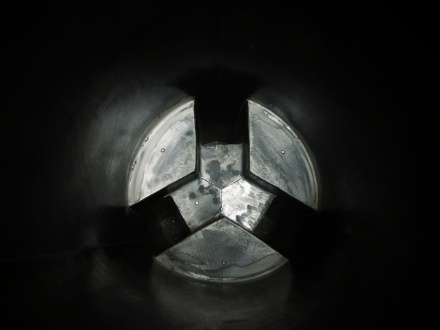The Eindhoven based designer, Joost Gehem, stumbled upon an eco-friendly design process almost by accident. While he had a long standing interest in recycling and sustainable life styles, he came across re-purposing materials from an unusual angle.
His research into recycling waste brought his attention to statistics affecting our society, such as the number of deaths, divorces, bankruptcies and the amount of elderly people needing to move to retirement homes. When he considered what may link these statistics, he came to an interesting conclusion – household items. These often tragic and life changing events often result in discarded or unwanted objects, as houses are sold or cleared out.
Joost started to wonder what happened to these objects and where they ended up. After searching the internet he realised he could obtain the entire contents of a house that people no longer wanted. Many of these unwanted objects were the result of deaths and divorce, but he was also interested in the people who simply wanted to change or update the interior of their homes.

He says:
“I could hardly believe how cheap a complete interior could be and how much of it you could obtain in this way. I began to see it as a material and I envisioned a little factory in my mind. What if I could create products out of this unwanted material. “
He saw this material as almost a raw material that would be re-purposed and remoulded into a different form, changing its appearance and consistency to give it a new life cycle.
At first he was a little concerned about what the grieving friends or family think. Whether they would welcome the possibility that objects once belonging to their deceased friend or family member would be broken down into a pulp and be reused as a material to create a new product.
However after presenting his idea to the son of an elderly widower from whom he was buying the entire 1960s interior of a house, he realised that many people would welcome the reuse of these objects. Reshaping and transforming these old pieces of furniture and household items, gives them a new meaning and a new purpose when they have become obsolete.
Joost explains:
“So some people think it’s about recycling or up-cycling etc. I can’t disagree with that, but I did not start this process as an engineer, I’m not qualified to do that. I looked at the process from a different perspective, I focused on the powerful life events like death, divorce, etc. these things happen a lot all over the world. Most importantly I can relieve the ‘owner’ of the product in a considerate/air/appropriate way and create a new usable product ‘life cycle’. That’s my first priority.”
Joost believes in the importance of improving our lifestyle in general, changing the way we live and consume. His products not only provide a solution for unwanted objects resulting from a change of circumstances, but they also provide a way to gain value from something that has possibly been deemed to be worthless. By creating a new product he can change the aesthetics and the purpose of the product itself giving it an completely new lease of life. For more information visit the Transformation & Distribution Centre for Abandoned Household Items.











